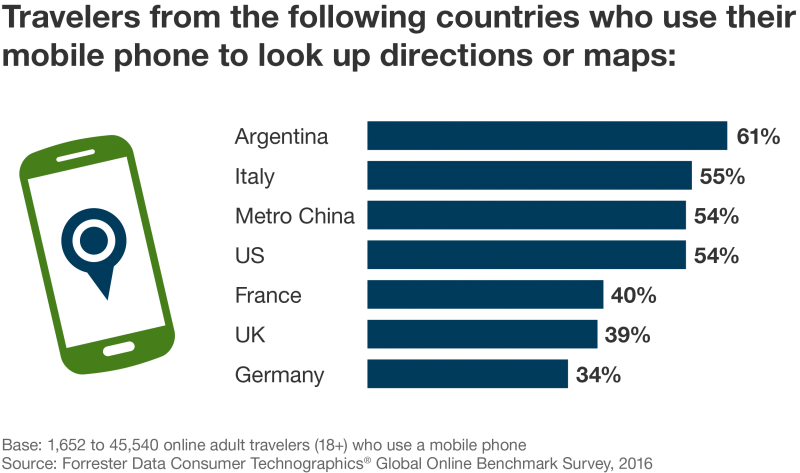The Data Digest: Mobile Phone — Compass, Guide, And Connector
I’ve spent the past few weeks traveling around Europe, and during my trip, I became keenly aware of how much I rely on my phone to connect me with the physical world – especially when navigating unfamiliar streets. But as I strolled through major cities and charming countryside towns, I passed groups of locals and tourists – some with physical maps, others following directions dictated by their personal devices. I began to wonder: Do consumers around the world rely on digital navigation differently?
According to Forrester Data’s Consumer Technographics® data, mobile geo-location behaviors do, in fact, vary by country. For example, more than six in 10 metropolitan Argentinian travelers frequently use their mobile phones to look up directions and maps, compared with only a third of German travelers:

But like many globetrotters, while I count on my mobile phone’s navigation abilities, I also enjoy using travel to “unplug.” I make sure I don’t map out every piece of my itinerary but allow for spontaneous discoveries. Mobile apps like Here We Go and TripIt have developed loyal users because they provide specific, contextual real-time data to solve quick pain points without distracting from the adventure overall.
As consumers’ mobile behavior evolves, and as it becomes easier for consumers to use their phones abroad, mobile navigation can go one step further in connecting consumers to their physical environment by inspiring curiosity and nudging them toward relevant experiences that enhance their overall trip. As my colleague Allegra Burnette says in her recent report: “businesses will find that the breadth, depth, and intensity of the kinds of experiences they can deliver expands far beyond today’s comparatively anemic touchpoints. Successful brands will support journeys that […] use contextual cues to shape the journey and make beneficial choices.” Mobile maps and directions are more than a helpful tool to aid consumers on the go; among the most mobile-oriented populations, they can guide, educate, and capture information that enhances the traveler’s overall experience.
